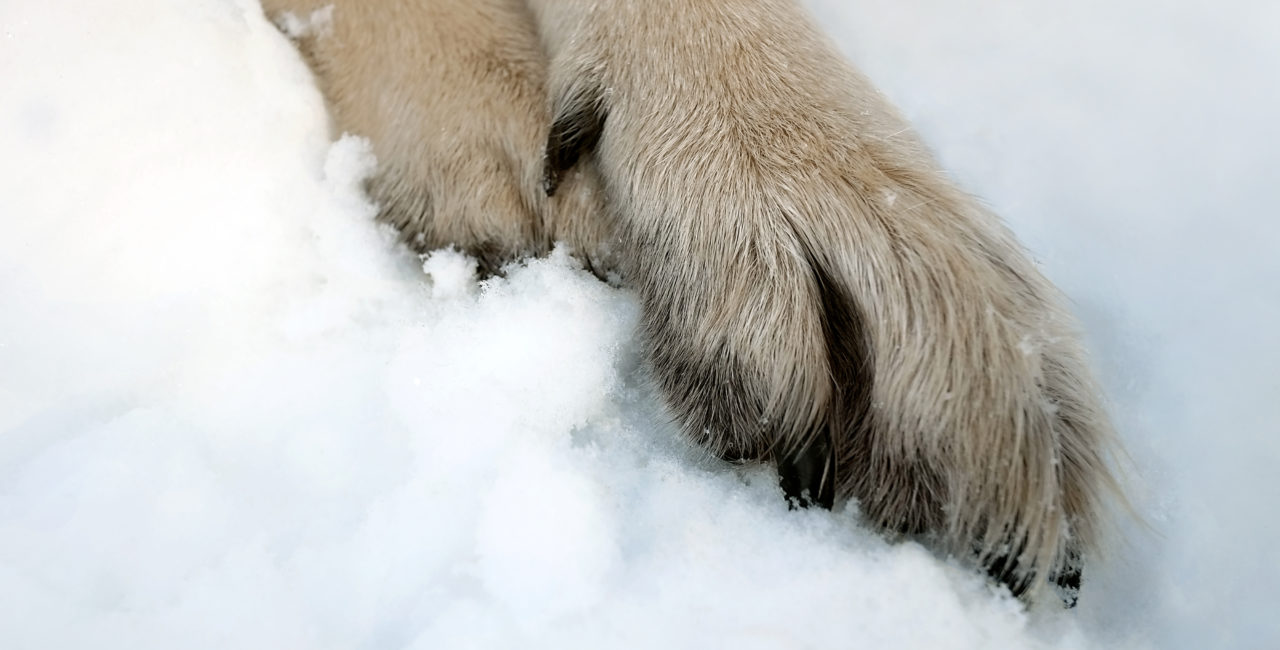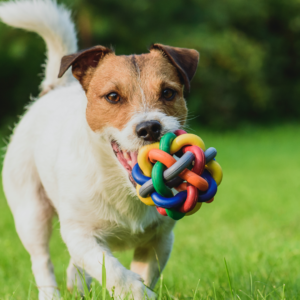Anyone who has owned a dog and continued their daily walk routines as the calendar ploughs us into Canadian winter has seen their pet hopping and hobbling across a salty street. They are often holding up one paw but sometimes doing a balancing act trying to hold up two at once! In the meantime they are giving those sad hangdog looks as if it was all their humans’ fault. And then when they finally get to the other side and make it to some pristine clean snow on a grassy area they carry on hobbling for another bit until the stinging wears off.
Prevention – A Barrier
Waterproof booties provide the best barrier to protect paws and pads from the salt on streets and sidewalks, though it can take a while to have your dog grow accustomed to having them put on and to walking with them. Using treats and praise is important to have them learn to tolerate having the boots put on, so if it’s a new project be sure to take your time with the training. Make sure to have them on snugly enough to keep them in place but not so tight that it will be uncomfortable, or they may start to slow down and not want to walk, or limp if one is particularly tight. There are a number of different booties on the market; one seen often in our part of the country is Muttluks which are made in Canada. They have a long snug sleeve that helps keep the snow out and helps keep them in place, along with a reflective strap. If ordered through Barlee’s Angels Rescue Network, you can help contribute to dog rescues and adoptions!
Another way of providing protection from the salt is applying a barrier on the pads in the form of a topical application. There are a number of products available, but most are a combination of waxes and oils which help to seal the pad and paw skin tissues so that the salt cannot get into the micro-cracks and cause stinging. In my own experience this type of product works well for an average winter length walk, and will start to wear off somewhat on longer ones. It is applied immediately before going outside for a walk, and it is advisable to have everything ready to go at the door because if they go for a lap around your main floor before leaving they may leave waxy prints to clean up later!
Other Tips for Happy Winter walks
Some dogs have very furry paws, with extra fur growing from between toes as well as between pads. In some cases when the fur is smooth and has some stiffness this can help protect the skin lying underneath, but in other dogs with fluffier finer fur it can act as an attractant for snow to ball up and make walking uncomfortable. If you find the snow forming little balls, it is best to keep the fur well-trimmed around pads and toes. If using scissors at home, be sure you’ve got a cooperative pet, otherwise a groomer or veterinary clinic can help givea trim using clippers that won’t damage skin.
General Paw and Pad Health
Winter can be hard on our pets’ paws and it’s a good idea to check them periodically for cuts, abrasions, sores and injured nails. The ice can be sharp and the thick crusts will occasionally catch the dewclaw as they break through to the soft snow underneath. At Coxwell Veterinary Clinic we tend to see a few more torn nails during winter months than in the warmer seasons. For this reason, try to have your pet’s nails trimmed regularly to reduce the chance of catching and breaking. Sometimes with the white background snow provides we can see blood flecks immediately if there has been an injury. Many times, however, the first sign of a problem may be your dog spending longer than usual licking one paw in particular once you are back in your home. Have a look if your pet allows you, and if the appearance has you concerned, or ifyour pet is reluctant to let you see it book an appointment for your veterinarian to check out the problem. One of the most important things you can do at home while waiting for your appointment is to put an Elizabethan collar on to prevent excessive licking. Many times the paw injuries we assess and treat at Coxwell Veterinary Clinic have been made from molehills into mountains from excessive licking!
Our Canadian winters can be harsh, there is no doubt, but our dogs still need their walks! There are things you can do to prevent salt stinging and injuries to paws so you and your pet can keep enjoying your exercise right through the season. Don’t let paw worries stop you from getting outside for your routines with your pet. Otherwise we could end up losing the battle with the waistline – but that’s a topic for another day…




